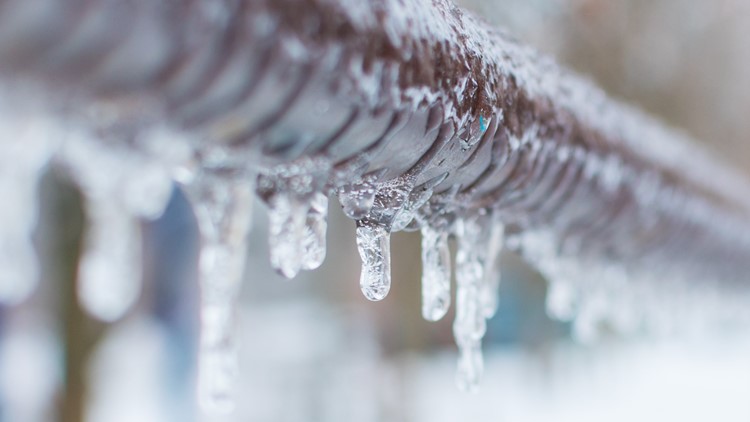Avoiding Frozen Plumbing in Cold Weather: Key Tips
Avoiding Frozen Plumbing in Cold Weather: Key Tips
Blog Article
The publisher is making several good points about How to prepare your home plumbing for winter weather overall in this great article directly below.

Cold weather can ruin your plumbing, specifically by freezing pipes. Below's how to stop it from occurring and what to do if it does.
Intro
As temperatures decline, the risk of frozen pipelines boosts, possibly leading to expensive fixings and water damage. Comprehending just how to prevent frozen pipes is critical for homeowners in chilly climates.
Avoidance Tips
Insulating susceptible pipes
Wrap pipelines in insulation sleeves or use warmth tape to protect them from freezing temperatures. Focus on pipes in unheated or exterior areas of the home.
Home heating strategies
Maintain indoor rooms adequately warmed, especially locations with pipes. Open cupboard doors to permit cozy air to flow around pipelines under sinks.
Exactly how to determine icy pipes
Search for lowered water circulation from taps, unusual odors or noises from pipes, and visible frost on subjected pipelines.
Long-Term Solutions
Structural modifications
Take into consideration rerouting pipelines away from exterior walls or unheated areas. Add additional insulation to attic rooms, cellars, and crawl spaces.
Updating insulation
Purchase high-grade insulation for pipelines, attic rooms, and wall surfaces. Correct insulation aids keep regular temperature levels and minimizes the danger of frozen pipes.
Protecting Exterior Pipes
Garden hose pipes and outdoor taps
Detach and drain yard pipes before winter months. Set up frost-proof spigots or cover exterior faucets with shielded caps.
Comprehending Frozen Pipelines
What causes pipelines to ice up?
Pipelines ice up when revealed to temperature levels listed below 32 ° F (0 ° C) for expanded durations. As water inside the pipelines ices up, it increases, taxing the pipeline wall surfaces and potentially triggering them to burst.
Risks and damages
Icy pipelines can cause water disturbances, property damages, and costly repair work. Burst pipes can flood homes and cause extensive structural damage.
Indicators of Frozen Piping
Identifying frozen pipelines early can stop them from bursting.
What to Do If Your Pipes Freeze
Immediate activities to take
If you believe frozen pipelines, maintain taps open up to ease pressure as the ice thaws. Make use of a hairdryer or towels taken in hot water to thaw pipelines slowly.
Final thought
Preventing frozen pipelines requires aggressive procedures and fast reactions. By recognizing the causes, indicators, and preventive measures, house owners can protect their plumbing throughout winter.
6 Proven Ways to Prevent Frozen Pipes and Protect Your Home
Disconnect and Drain Garden Hoses
Before winter arrives, start by disconnecting your garden hoses and draining any remaining water. Close the shut-off valves that supply outdoor hose bibs and leave the outdoor faucet open to allow any residual water to drain. For extra protection, consider using faucet covers throughout the colder months. It’s also important to drain water from any sprinkler supply lines following the manufacturer’s directions.
Insulate Exposed Pipes
Insulating your pipes is an effective way to prevent freezing. Pipe insulation is readily available at home improvement stores and is relatively inexpensive. Pay close attention to pipes in unheated areas such as the attic, basement, crawl spaces, or garage. Apply foam insulation generously to create a buffer against the cold. You can also wrap your pipes in heat tape or thermostat-controlled heat cables for added warmth.
Seal Air Leaks
Inspect your home for any cracks or openings that could let in cold air. Seal any holes around the piping in interior or exterior walls, as well as the sill plates where your home rests on its foundation. Additionally, make sure to keep your garage door closed unless you’re entering or exiting. Leaving it open creates a significant air leak that can lead to frozen pipes.
Allow Warm Air Circulation
During cold snaps, it’s essential to allow warm air to circulate evenly throughout your home. Leave interior doors ajar to promote better airflow. Open kitchen and bathroom cabinets to help distribute heat consistently around the rooms. If you have small children or pets, be sure to remove any household chemicals or potentially harmful cleaners from open cabinets for safety.
Let Faucets Drip
A small trickle of water can make a big difference in preventing ice formation inside your pipes. When temperatures drop significantly, start a drip of water from all faucets served by exposed pipes. This continuous flow helps prevent the water from freezing. Additionally, running a few faucets slightly can relieve pressure inside the pipes, reducing the chances of a rupture if the water inside does freeze.
https://choateshvac.com/6-proven-ways-to-prevent-frozen-pipes-and-protect-your-home/

We were shown that editorial on Prevent Frozen Pipes through a friend on a different web page. You should take the opportunity to distribute this page if you appreciated it. We appreciate reading our article about Preventing and dealing with frozen pipes.
Click Report this page